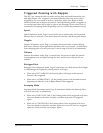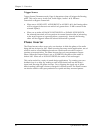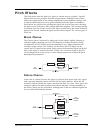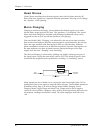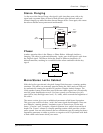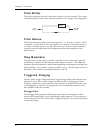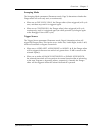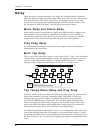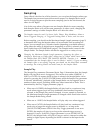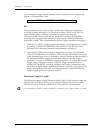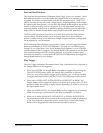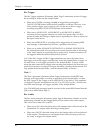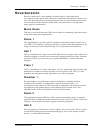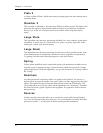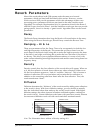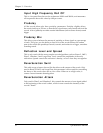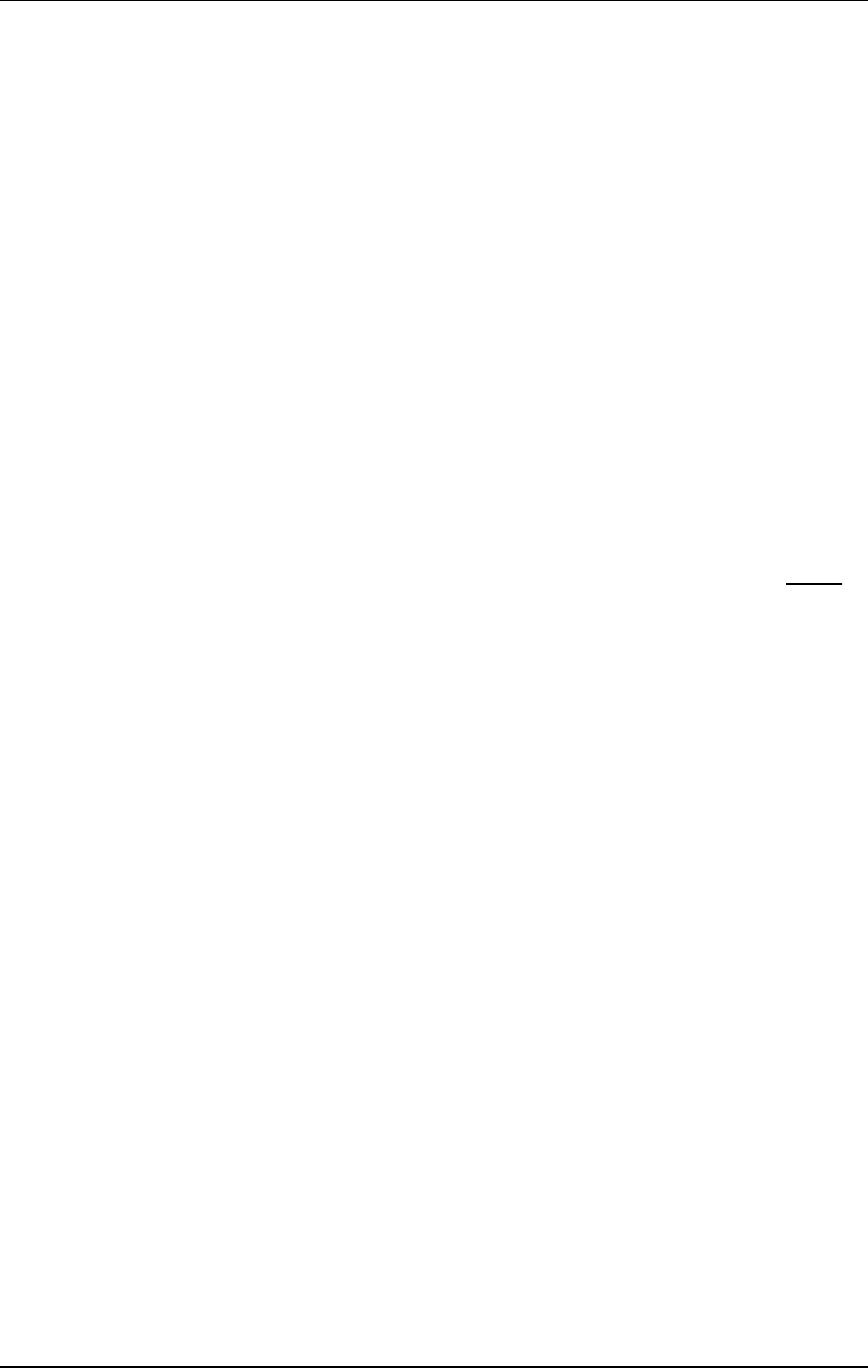
Overview - Chapter 3
Q20 Reference Manual 45
Sampling
Once a Block is de-fined as a Delay function, you can select the Sampler effect type.
The Sampler has one mono input and one mono output. Two Sampler Blocks can be
used in a single Program to provide stereo sampling (one for the Left channel, the
other for the Right).
Note: In the case where a Program uses two Sampler Blocks for stereo sampling,
both Sampler Blocks will use the same parameters. In other words, changing the
parameter settings of either Sampler Block will affect the other.
The Sampler cannot be used if a Stereo Lezlie, Phasor, Ring Modulator, Mono or
Stereo Triggered Flanging or Triggered Panning Block is active, and vice-versa.
Before sampling, you should set the Maximum Sample Length parameter (page 2)
to determine how long the Sampler effect will record audio once recording has
begun. You can sample up to 5 seconds of audio (depending on available memory),
using either the analog or digital inputs, depending on which is selected as the
Input Audio Source (in Global Mode, page 4). The sampled audio is stored in the
Sample Buffer. The Sample Buffer can then be triggered in a variety of ways.
Changing the Maximum Sample Length parameter, bypassing the effects, or
changing a Block type or Delay effectÕs delay time in a Block which comes
before
the Sampler Block will ERASE THE SAMPLE BUFFER. Therefore, it is
recommended that the Sampler effect be used in Blocks 1 and/or 2. If you are adding
the Sampler effect to an existing Program, you should use the Move Block command
to rearrange the existing Blocks and make room for the Sampler Block.
Sample Play
The Sample Play parameter (Parameter Mode, Page 1) determines how the Sample
Buffer will play back once it is triggered. This can be set to either LOOPING, 1
SHOT or GATED. No matter which of these is selected, the Sample Buffer can be
played by pressing the [VALUE/ENTER] button while the Sample Play parameter
is selected. Additionally, playback of the Sample Buffer can be triggered from a
number of other sources, including: MIDI note, either footswitch or audio. This is
determined by the Play Trigger parameter (page 4).
¥ When set to LOOPED, the Sample Buffer will play back in a continuous loop
mode when triggered, and will loop indefinitely until another Program is
selected, or the Sample Play mode is changed, or a new sample is recorded, or
the Maximum Sample Length parameter is changed which would also result in
the Sample Buffer being erased.
¥ When set to 1 SHOT, the Sample Buffer will play only once when triggered.
¥ When set to GATED, the Sample Buffer will play back in a continuous loop
mode only as long as the trigger source is detected; i.e., as long as the
[VALUE/ENTER] button is held. If the Play Trigger parameter is not set to
ENTER, the sample will play for as long as the selected trigger source is
detected. Example: If the Play Trigger parameter is set to AUDIO LEFT &
RIGHT, the Sample Buffer will play as long as audio is detected at either the
analog or digital inputs, depending on which is selected as the Input Audio
Source.
✪
✪



